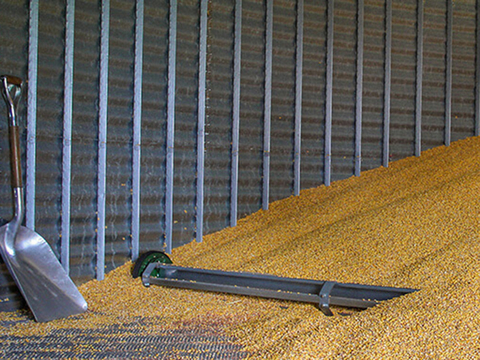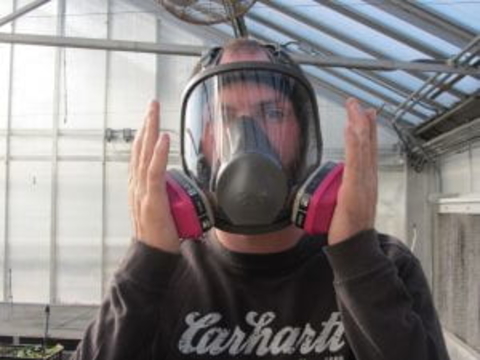Personal Protective Equipment (often referred to as PPE) is an important part of safety on farms. Hazards can be everywhere on farms, and taking preventative measures like using PPE is important to your safety.
PPE varies based on the task at hand, and not every job requires the same equipment. PPE is designed to control the uncontrollable and serve as the last line of defense in hazardous situations. It is used for your safety and should be used when necessary.
Examples of PPE are eye protection, hearing protection, feet protection, respiratory protection, gloves and full body suits. By figuring out what the hazards are for your task, it will depend on what PPE you will need.
To figure out what you need, begin with a walkthrough of the facility you're working in to develop a list of potential hazards. The workplace should be periodically reassessed for any changes in conditions, equipment or operating procedures that could affect occupational hazards.
Some basic hazard categories to consider are:
- Impact
- Penetration
- Compression (roll-over)
- Chemical
- Heat/cold
- Harmful dust
- Light (optical) radiation
- Biologic
Skin protection and feet protection
Skin irritations may result from handling various animals or plant materials. Cuts or open-skin sores may become infected from contact with air-borne contaminants, soil, animals or animal waste.
- Wear a body suit or long pants and long-sleeve shirts to help protect your skin.
- Wear gloves when appropriate to protect your hands.
- If you have open wounds, keep them bandaged when necessary to protect against exposure to dirt or bacteria that can infect the wound.
- Wear protective footwear if you are in danger of foot or leg injuries from falling or rolling objects or from crushing or penetrating materials.
Eye protection
Glasses, goggles and face shields are the most common types of eye protection. OSHA requires employers to ensure that employees have appropriate eye or face protection if they are exposed to eye or face hazards from flying particles, molten metal, liquid chemicals, acids or caustic liquids, chemical gases or vapors, potentially infected material or potentially harmful light radiation.
- Eyes are best protected from splashing chemicals or foreign materials by wearing goggles.
- Eye shields on safety glasses may be sufficient in some instances.
- Face shields work well when handling certain chemicals, grinding or when working in situations where full face protection is needed to prevent particles from being splashed or flung into the face.
Respiratory protection
Situations and materials that require respiratory protection.
- Dust
- Gases
- Pesticides
- Livestock and poultry confinements
- Grain handling
- Using gas or diesel indoors
- Paints and solvents
- Woodworking
It’s important that you have properly fitting protection. Dust masks are designed to filter the particulate before it reaches your respiratory system. Some respirators purify the air you breathe while others, that require power, supply clean air from a tank strapped to you.
- If you are exposed to dust or aerosols, use a two-strap respirator, cartridge with p100 filters, or powered air purifying respirator (PAPR).
- For exposure to chemicals or fumes, use a half-mask cartridge respirator, or powered air purifying respirator (PAPR).
- When you are working in an oxygen-limiting environment use a self-contained breathing apparatus (SCBA), or supplied-air respirator.
Hearing protection
Hearing loss is a common problem and could happen at any age for people working on farms. Since most farm equipment cannot be operated in a sound-proof enclosure workers should use hearing protection when operating or working in the vicinity of noisy machinery.
Earmuffs and plugs are available to provide hearing protection for most situations. Canal caps are also a good source of protection.
Exposure to excessive noise depends upon a number of factors, including:
- The loudness of the noise as measured in decibels (dB).
- The duration of each employee’s exposure to the noise.
- Whether employees move between work areas with different noise levels.
- Whether noise is generated from one or multiple sources.
Using PPE when necessary can reduce the risk of acute injuries as well as long-term health impacts. Selecting well-fitting PPE that is appropriate for the task being performed should be a crucial part of any farm’s safety plan. If there are youth helping with certain tasks, they should have PPE that fits them well and is designed for their size.
PPE doesn’t last forever and should be replaced when necessary. Change filters in respirators regularly and replace worn-out gloves. PPE should also be updated as farming practices change.
The proper use and maintenance of PPE will make your farm a safer place to work.
Reviewed in 2022



